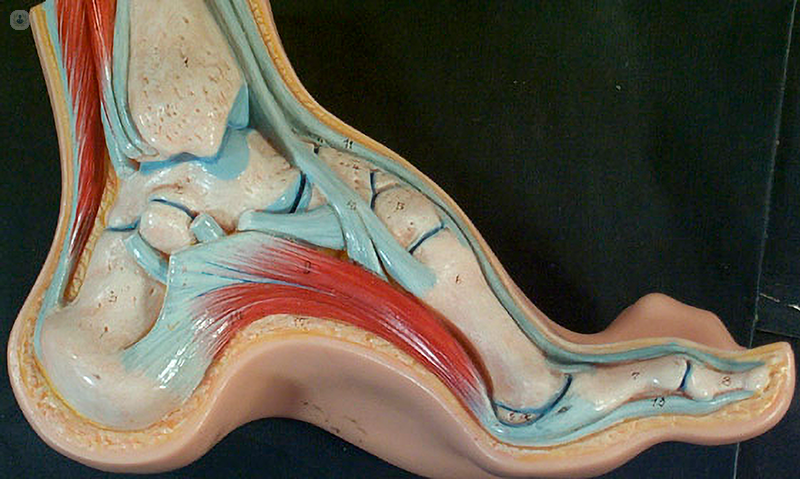

What is cavus foot?
Cavus foot (sometimes known as Pes cavus) is a type of foot deformity. In cavus foot, the arch of the foot is higher than normal and can’t flatten. Sometimes, the toes might be curled up and the heel drawn in. Cavus foot usually affects both feet.
What distinguishes cavus foot from other foot deformities involving a high arch is that the front part of the foot is drawn downwards, so the foot tends to rest on the outer side.

Can it be cured?
Cavus foot can be straightened through surgery (see the part on treatment below), but this is only considered if it’s causing severe symptoms.
What are the symptoms?
Some people don’t experience any problems other than finding it a little more difficult to buy shoes that fit.
Other people with the condition experience foot pain, particularly around the ankle or on the ball of the foot. The foot as a whole can ache if you’re on your feet for long periods of time because cavus feet tend to be stiffer than normal and cannot take pressure as well.
Cavus foot can also cause some people to sprain heir ankle more easily, or experience numbness as a result of their skin rubbing on shoes.
How is cavus foot diagnosed?
A diagnosis is usually made with a clinical examination and follow-up tests.
In the examination, the doctor ask about your symptoms, including any pain you experience – in your foot as well as in other parts of the body. Next the doctor will examine your foot and the way you stand to determine the kind of deformity you have. Finally, they will ask about your family history, as cavus foot is often an inherited condition.
The doctor is likely to order further tests to rule out or confirm other possible causes of the condition. This can include neurological tests, or scans of your spine if a tumour is suspected.
What are the causes?
Most people with the cavus foot have a neurological disorder, which could be static (symptoms stay the same) or progressive (symptoms worsen over time).
Static neurological disorders that cause cavus foot include stroke, polio, cerebral palsy, spinal injury, and peroneal nerve injury.
Progressive neurological disorders that can cause cavus foot include a spinal tumour, brain tumour, spinal cyst, muscular dystrophy, Friedreich’s ataxia, and Charcot-Marie-Tooth syndrome.
One in five cases of cavus foot have no obvious cause.
How it is treated?
For most people cavus foot doesn’t involve serious enough symptoms to treat with surgery, and the best thing to do is simply to make sure you take care of your feet. For some people foot pain can be improved by wearing special insoles or foot braces. Others have found physiotherapy helpful in improving their ankle muscles for greater stability. If you play sport, it’s important to make sure there is plenty of shock-absorbency in your shoes.
Surgery for cavus foot can include a range of procedures, including:
- shifting the heel bone back under your foot
- repositioning the bone leading to your big toe
- repositioning the muscles which are turning your feet outwards
- soft tissue release
- tendon transfer
The aim of surgery is to put your foot in a neutral position, reducing pain and improving your mobility and balance.
Foot surgery is a major operation – expect to have your foot in a cast for about six weeks, with full recovery taking up to twelve months. This is why it is generally only recommended in patients where symptoms are severe or expected to get worse.
